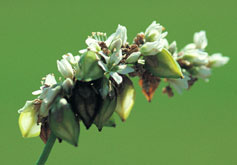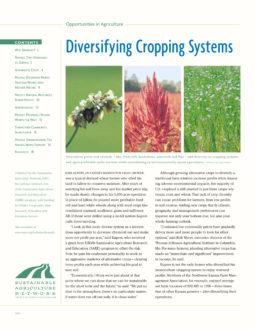Karl Kupers, an eastern Washington grain grower, was a typical dryland wheat farmer who idled his land in fallow to conserve moisture. After years of watching his soil blow away and his market price slip, he made drastic changes to his 5,600-acre operation. In place of fallow, he planted more profitable hard red and hard white wheats along with seed crops like condiment mustard, sunflower, grass and safflower. All of those were drilled using a no-till system Kupers calls direct-seeding.

“I look at this more diverse system as a tremendous opportunity to decrease chemical use and make more net profit per acre,” said Kupers, who received a grant from USDA’s Sustainable Agriculture Research and Education (SARE) program to offset the risk. Now, he puts his exuberant personality to work as an aggressive marketer of alternative crops – clearing more profits each year while achieving his goal to save soil.
“Economically, I think we’re just about at that point where we can show that we can be sustainable for the short term and the future,” he said. “We put no dust in the atmosphere, there’s no particulate matter, if water does run off our soils, it is clean water.”
Although growing alternative crops to diversify a traditional farm rotation increase profits while lessening adverse environmental impacts, the majority of U.S. cropland is still planted in just three crops: soybeans, corn and wheat. That lack of crop diversity can cause problems for farmers, from low profits to soil erosion. Adding new crops that fit climate, geography and management preferences can improve not only your bottom line, but also your whole farming outlook.
“Continued low commodity prices have gradually driven more and more people to look for other options,” said Rob Myers, executive director of the Thomas Jefferson Agricultural Institute in Columbia, Mo. For some farmers, planting alternative crops has made an “immediate and significant” improvement in income, he said.
Kupers is not the only farmer who diversified his monoculture cropping system to enjoy renewed profits. Members of the Northwest Kansas Farm Management Association, for example, enjoyed average net farm incomes of $50,485 in 1998 – three times that of other Kansas growers – after diversifying their operations.
